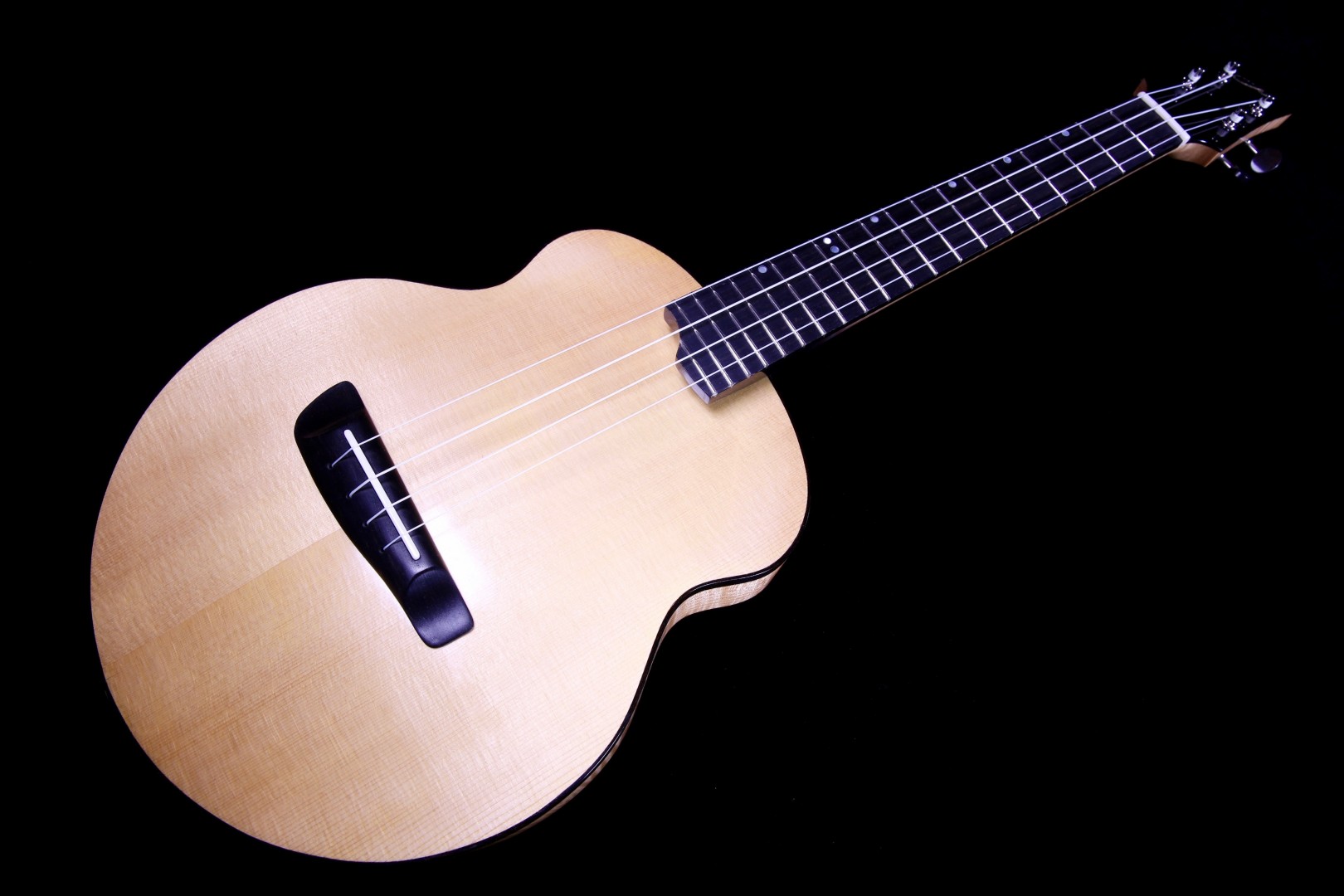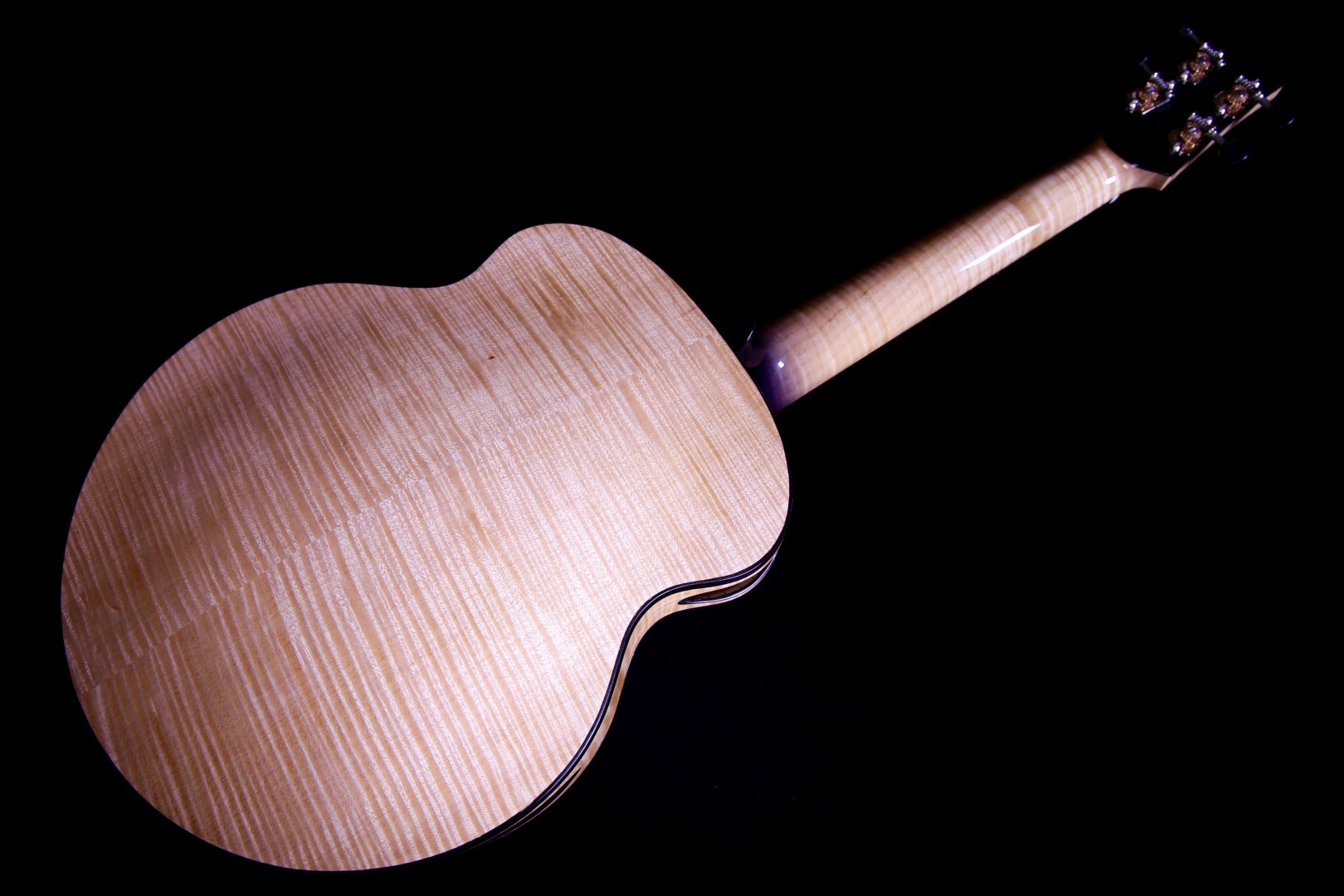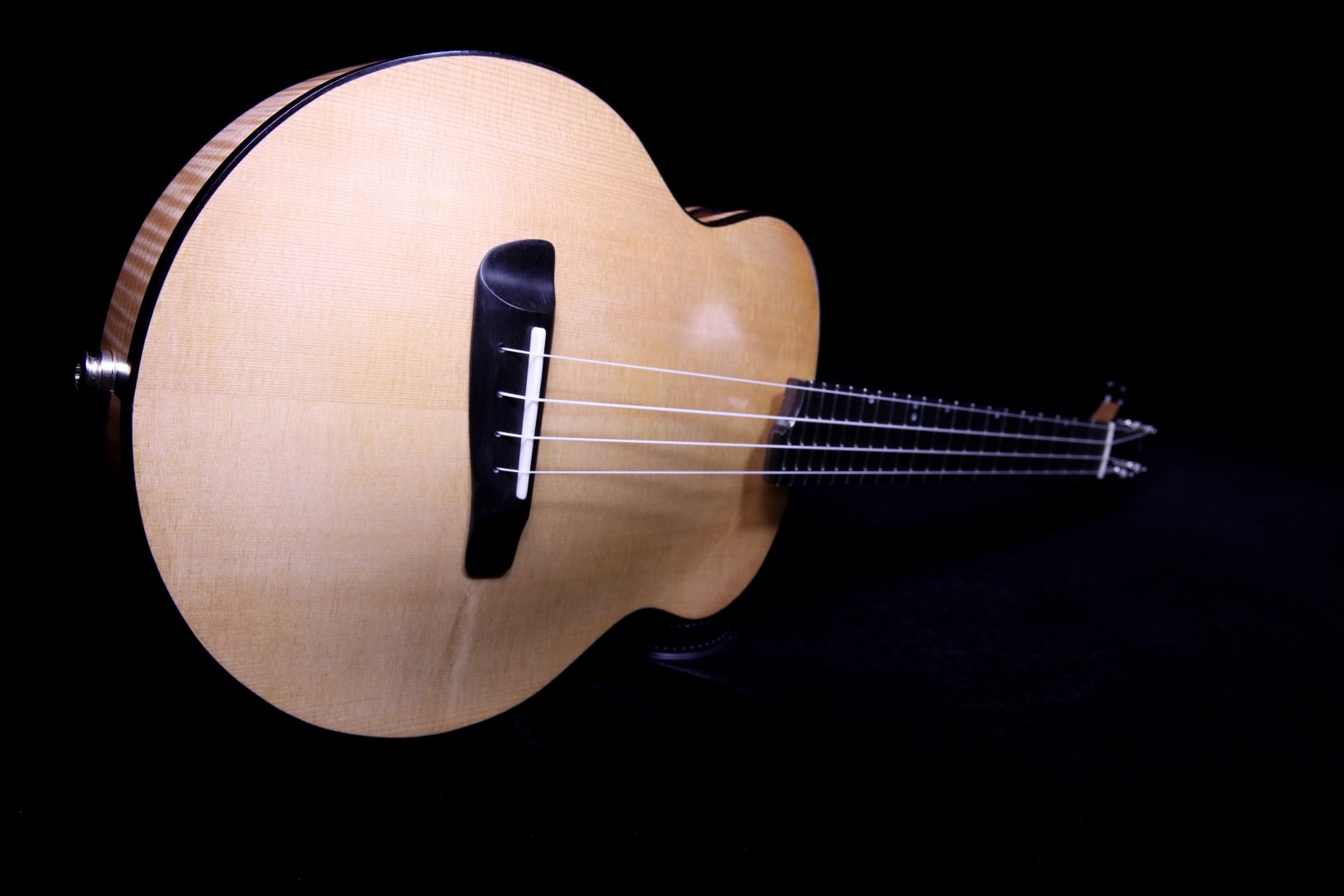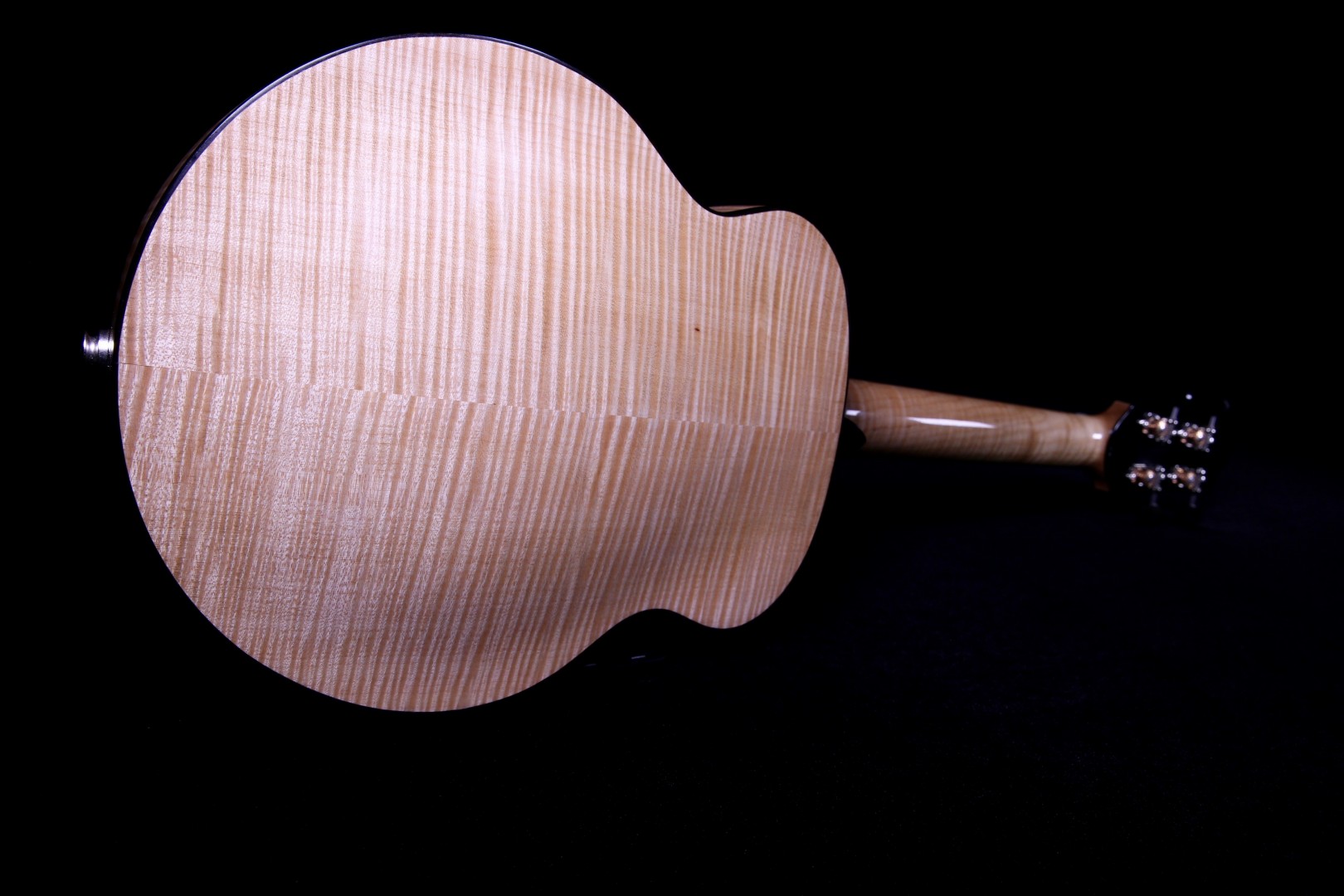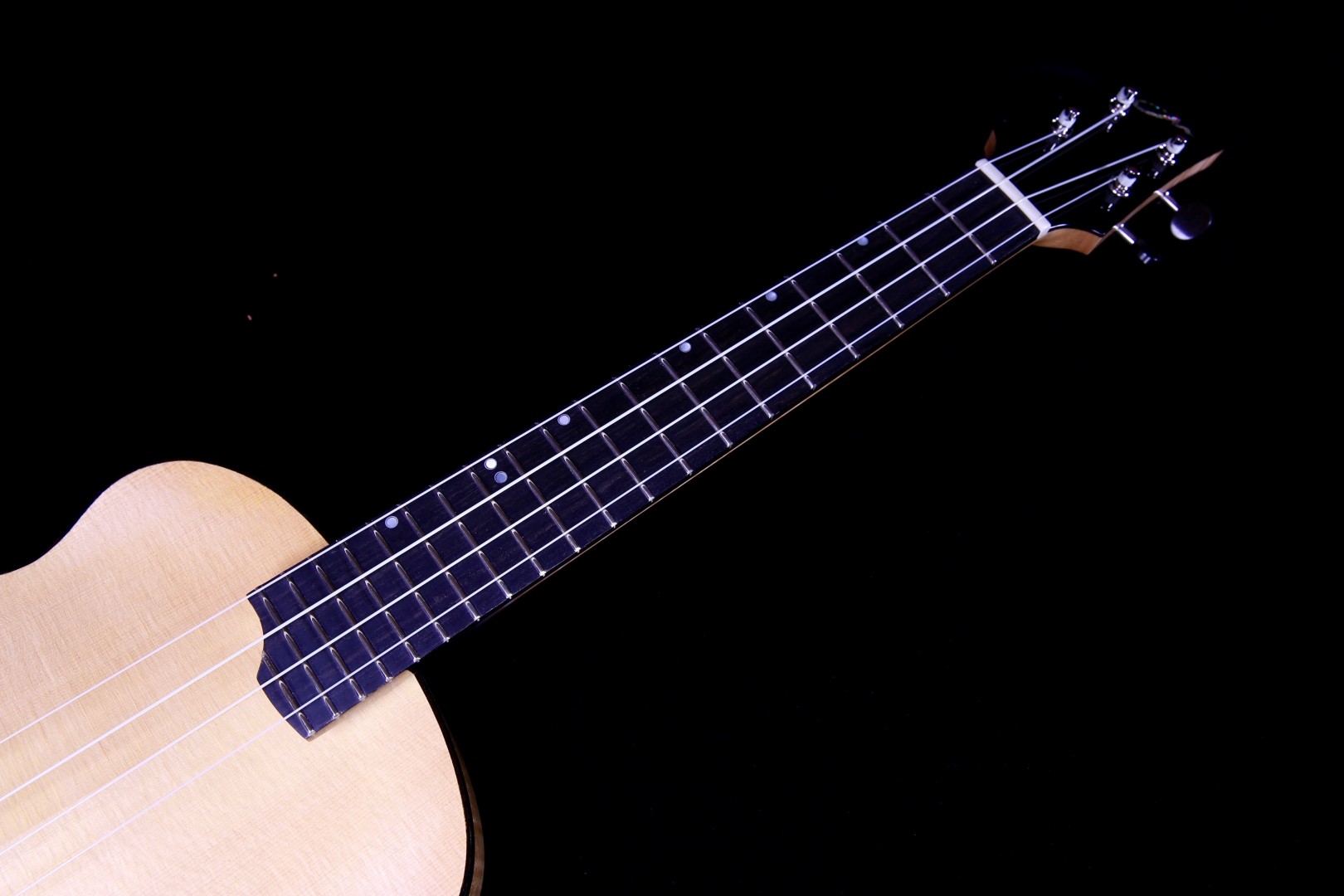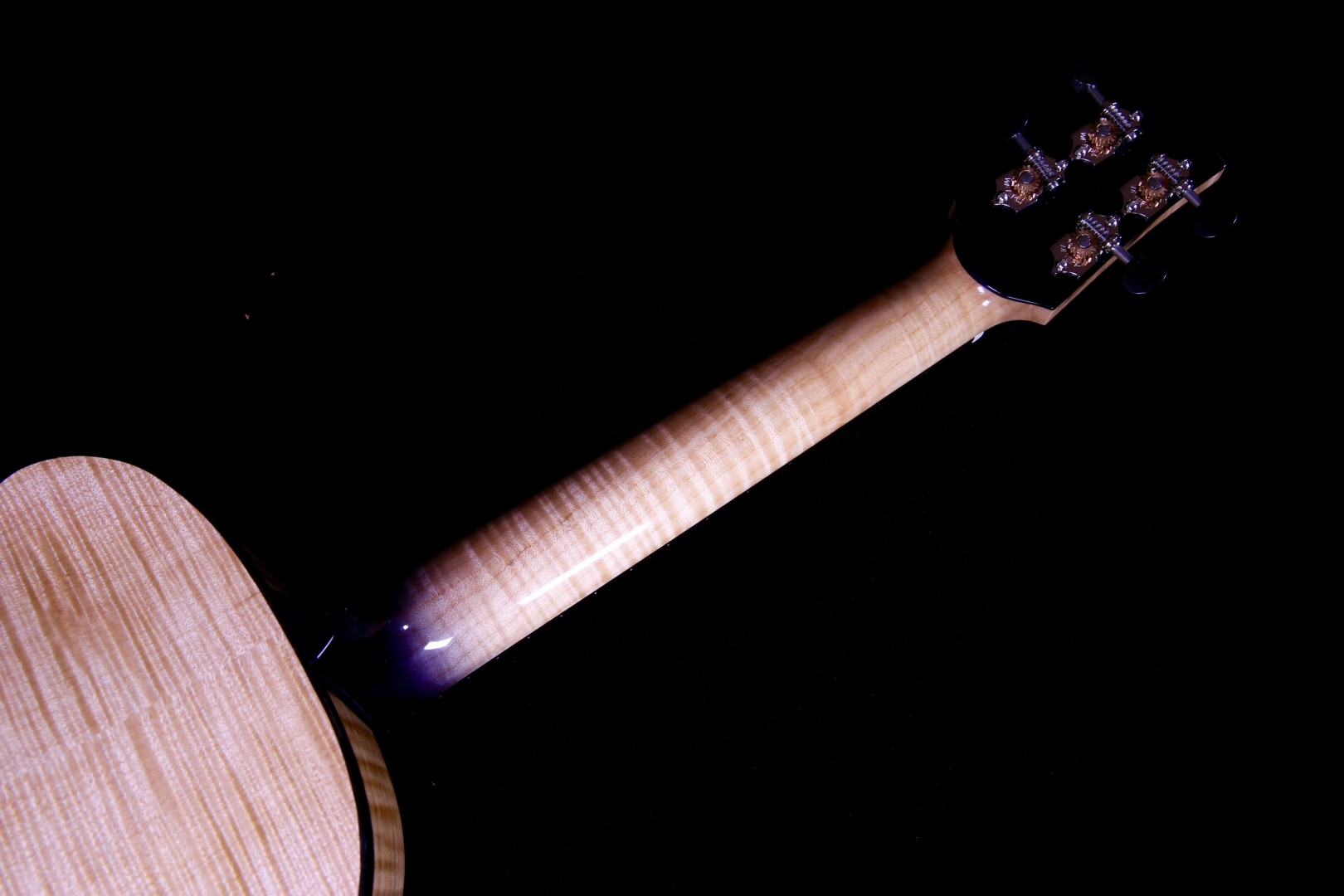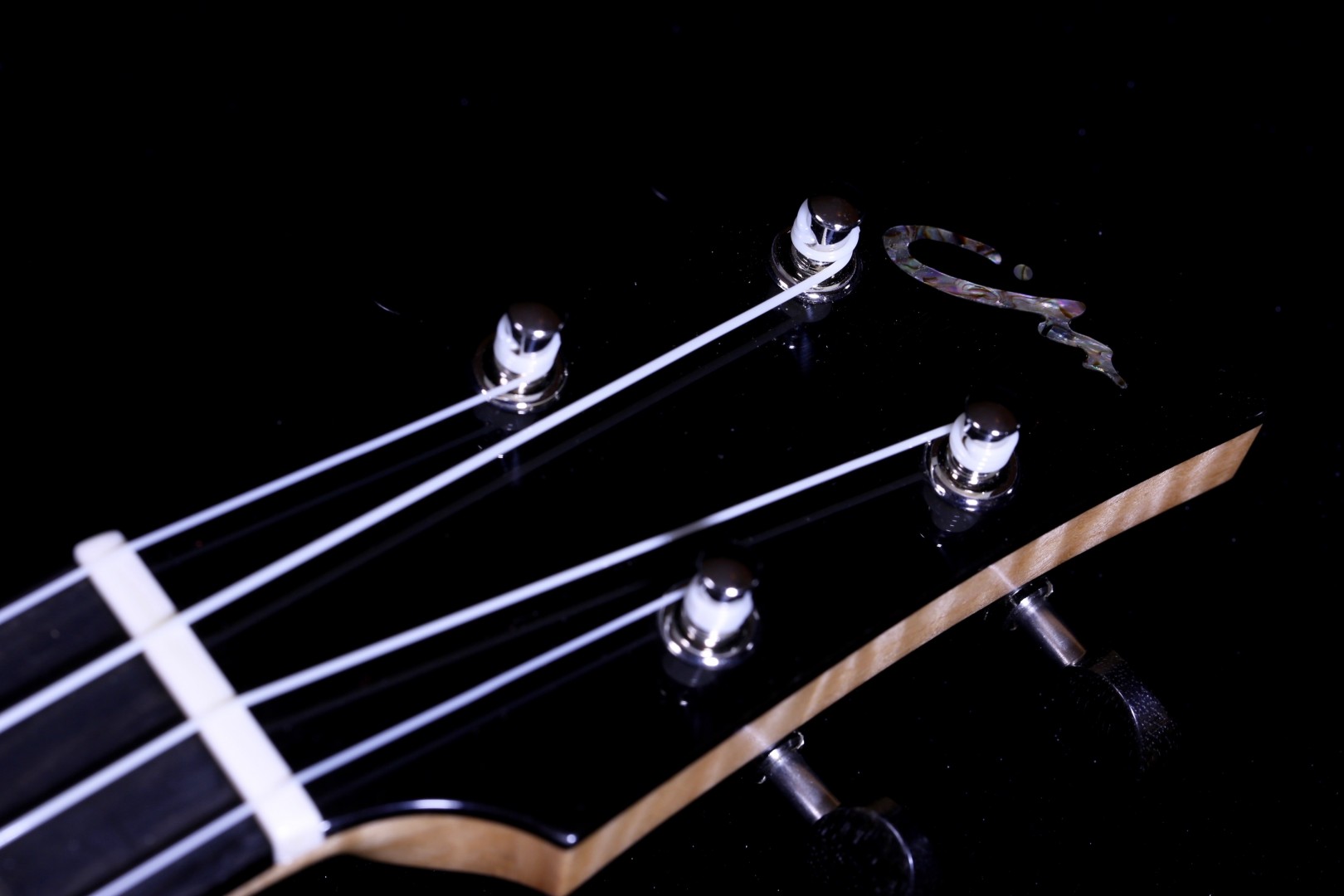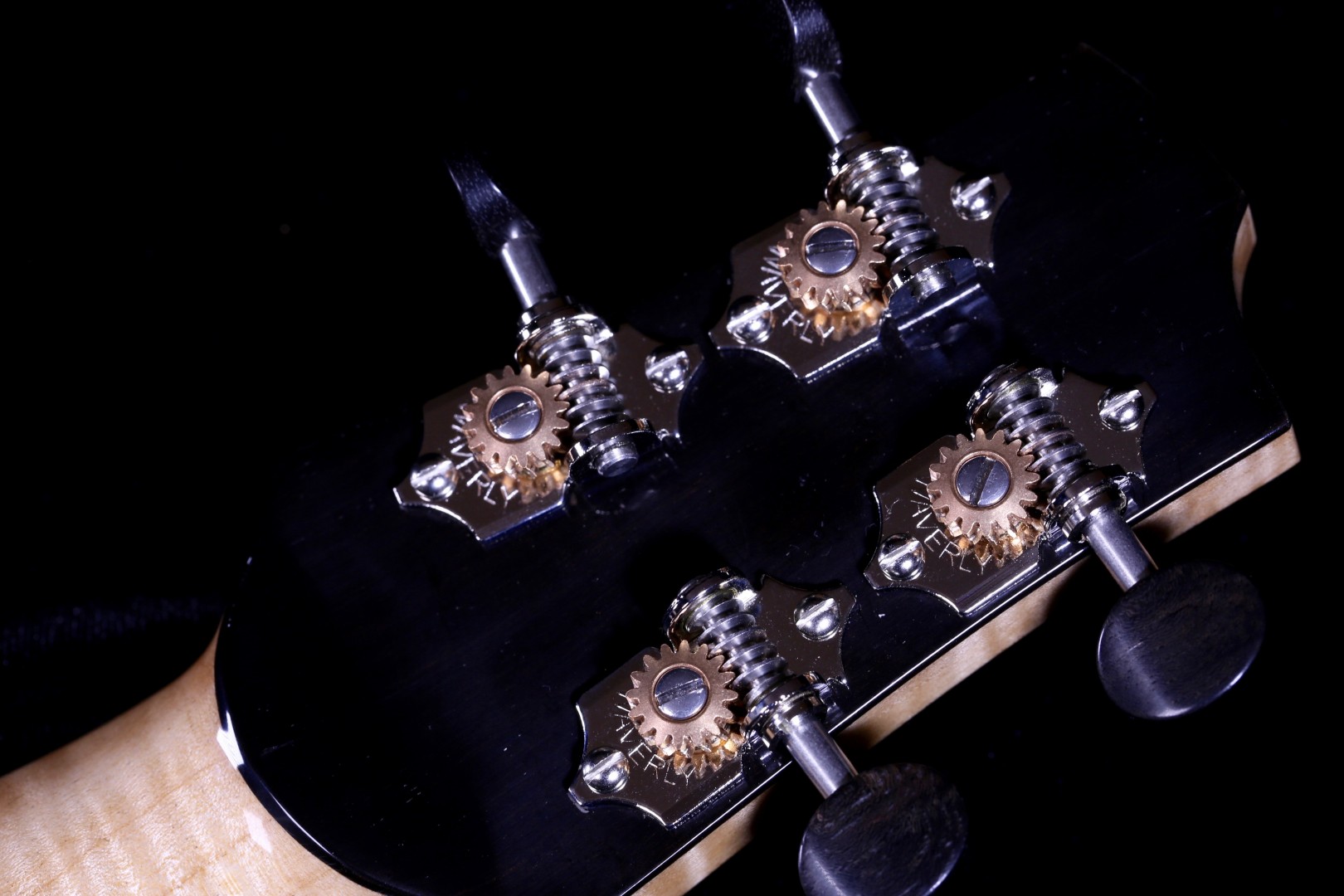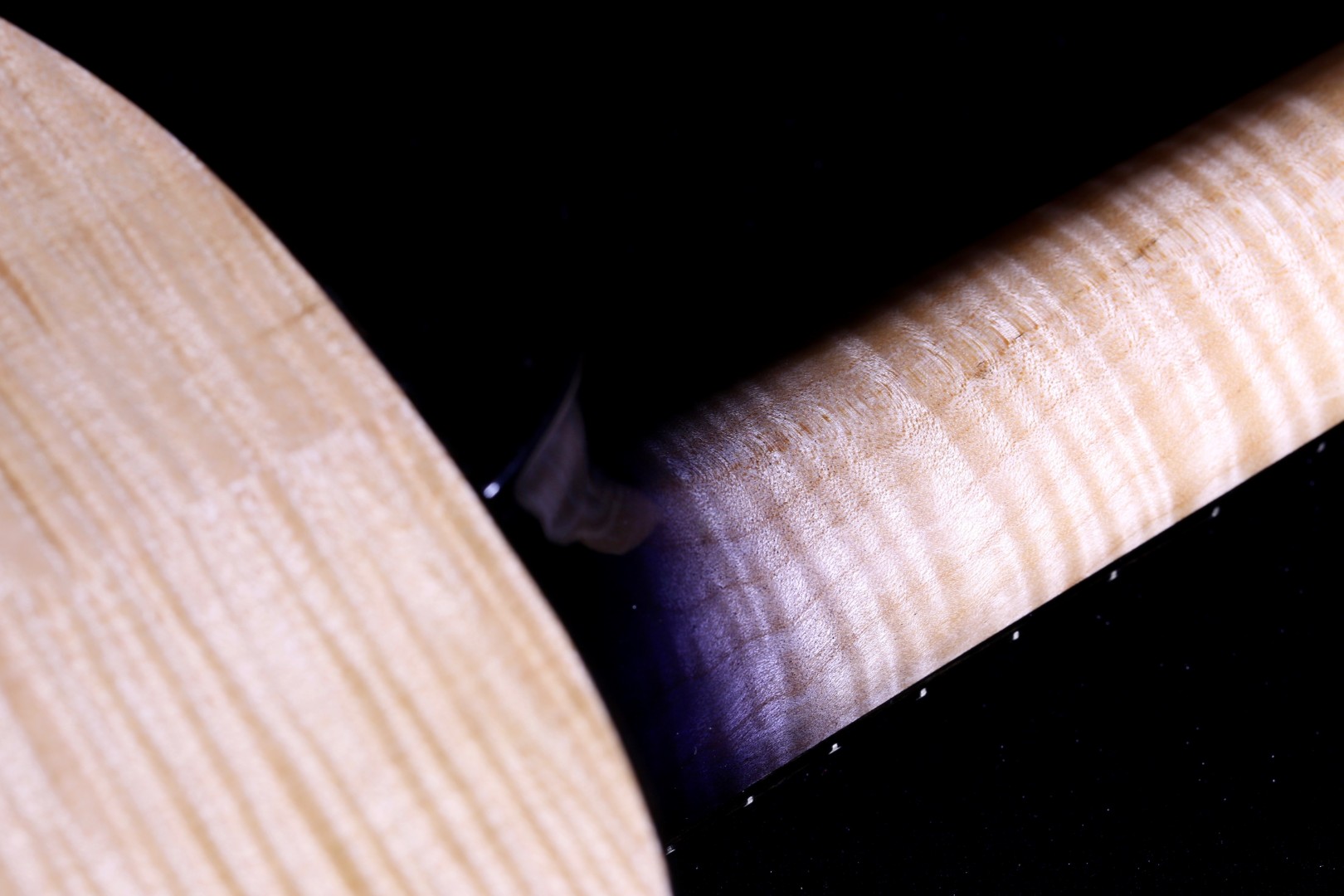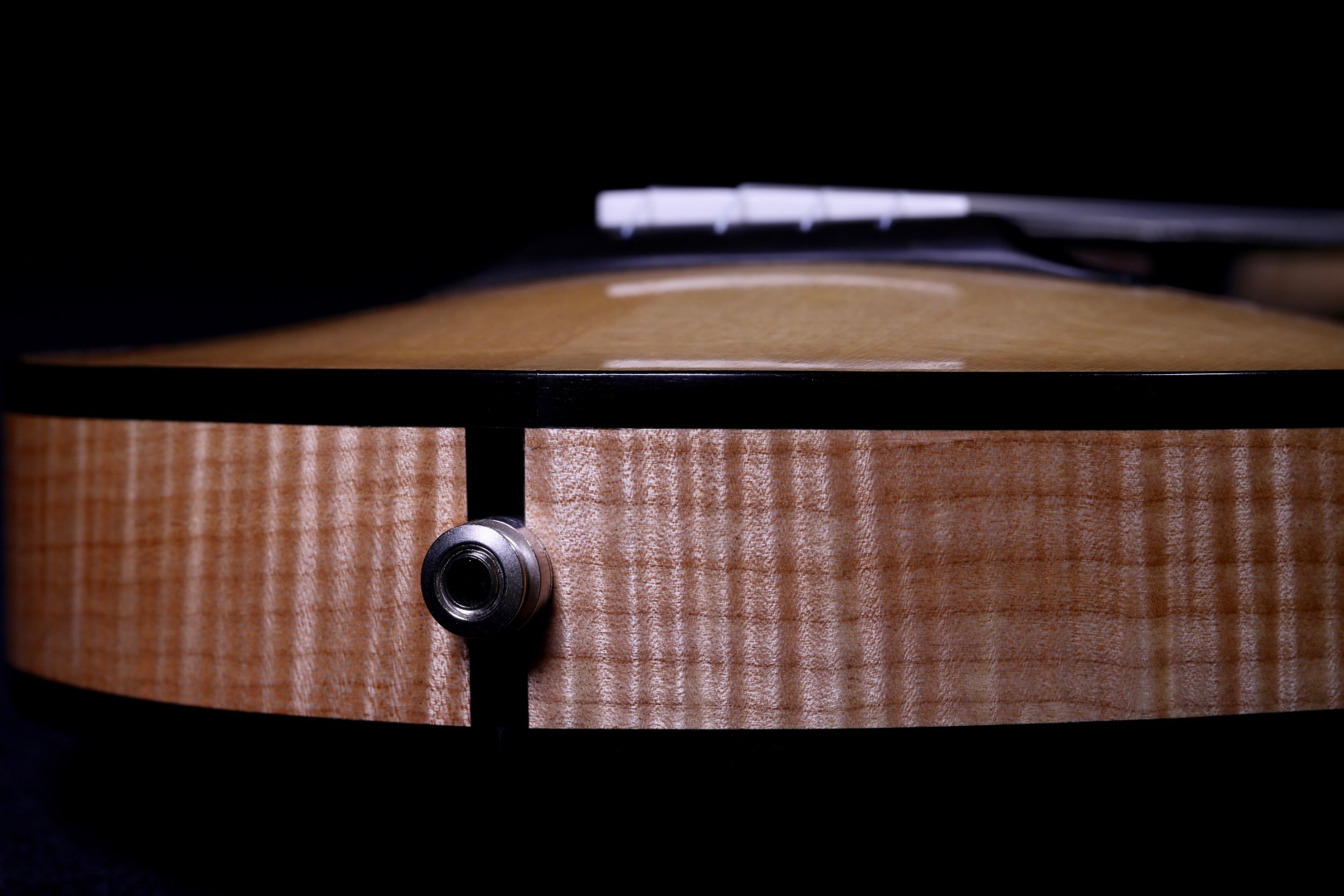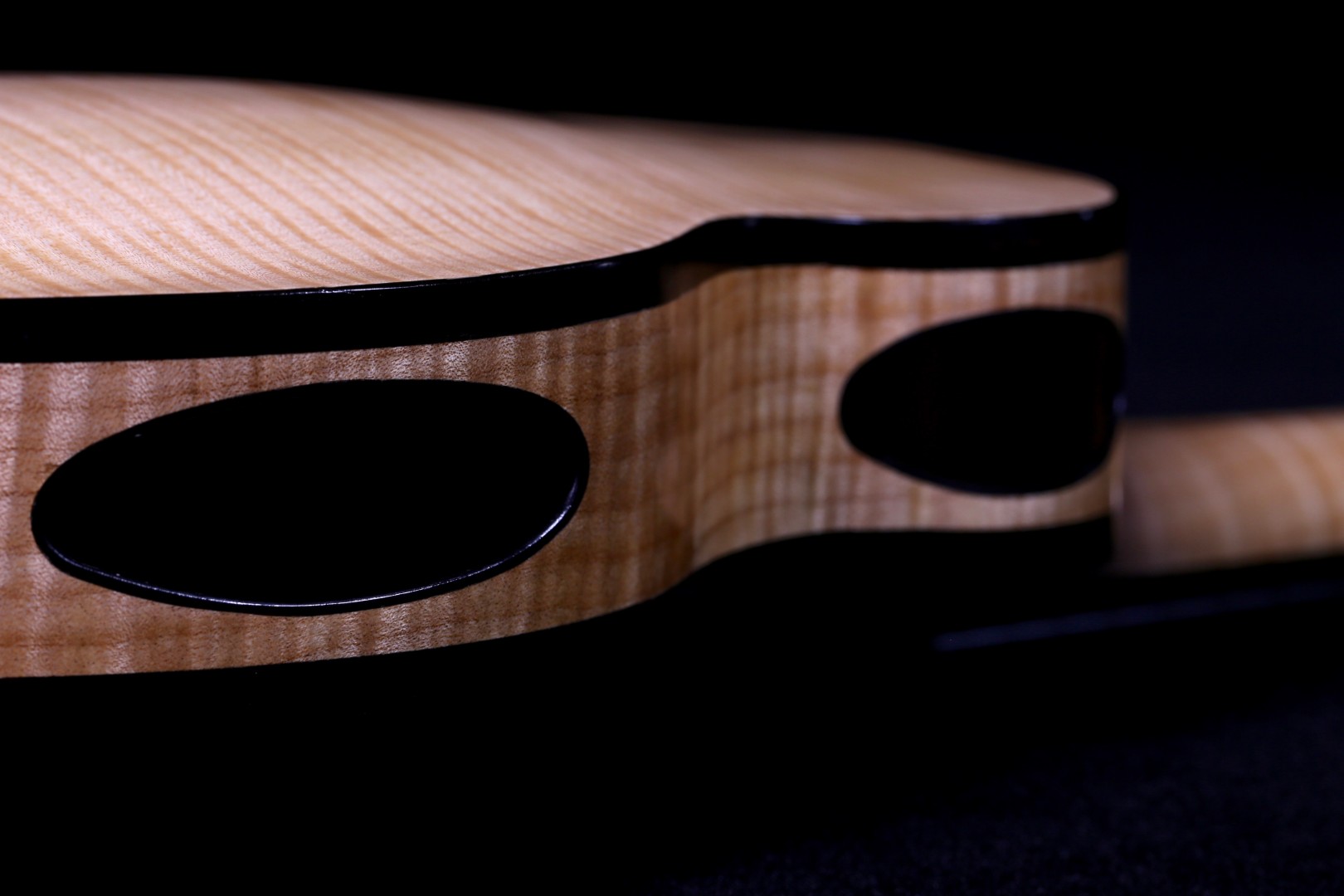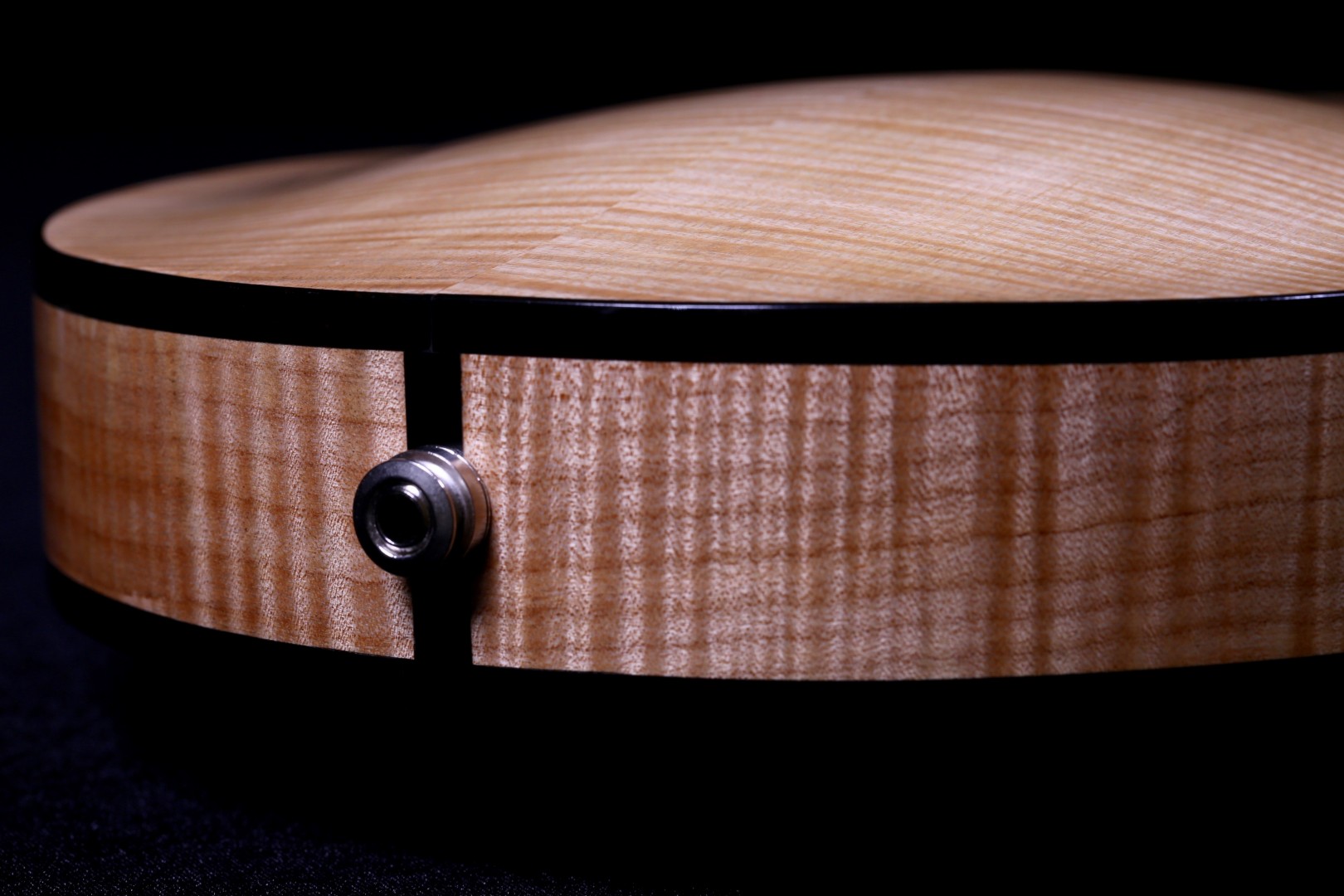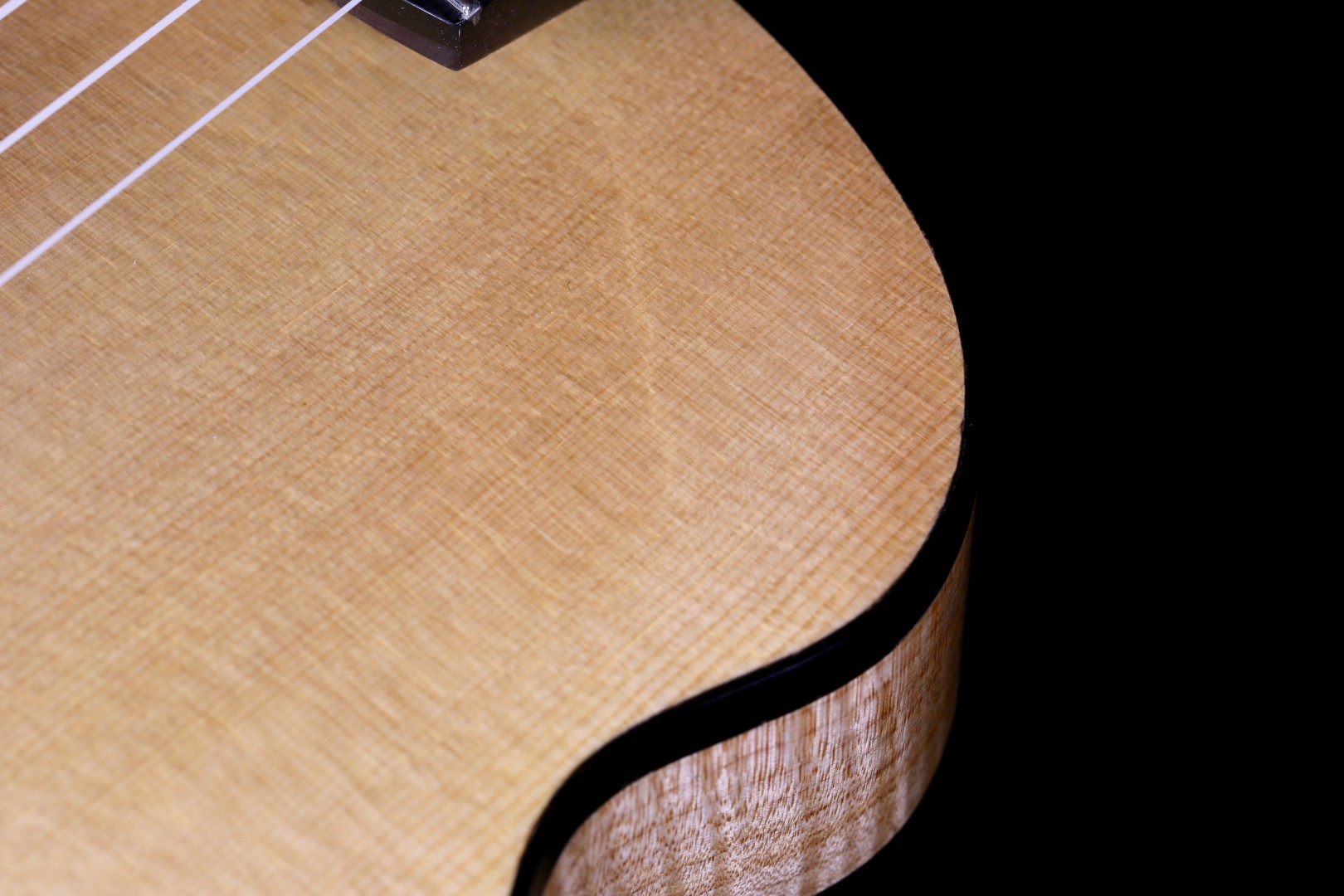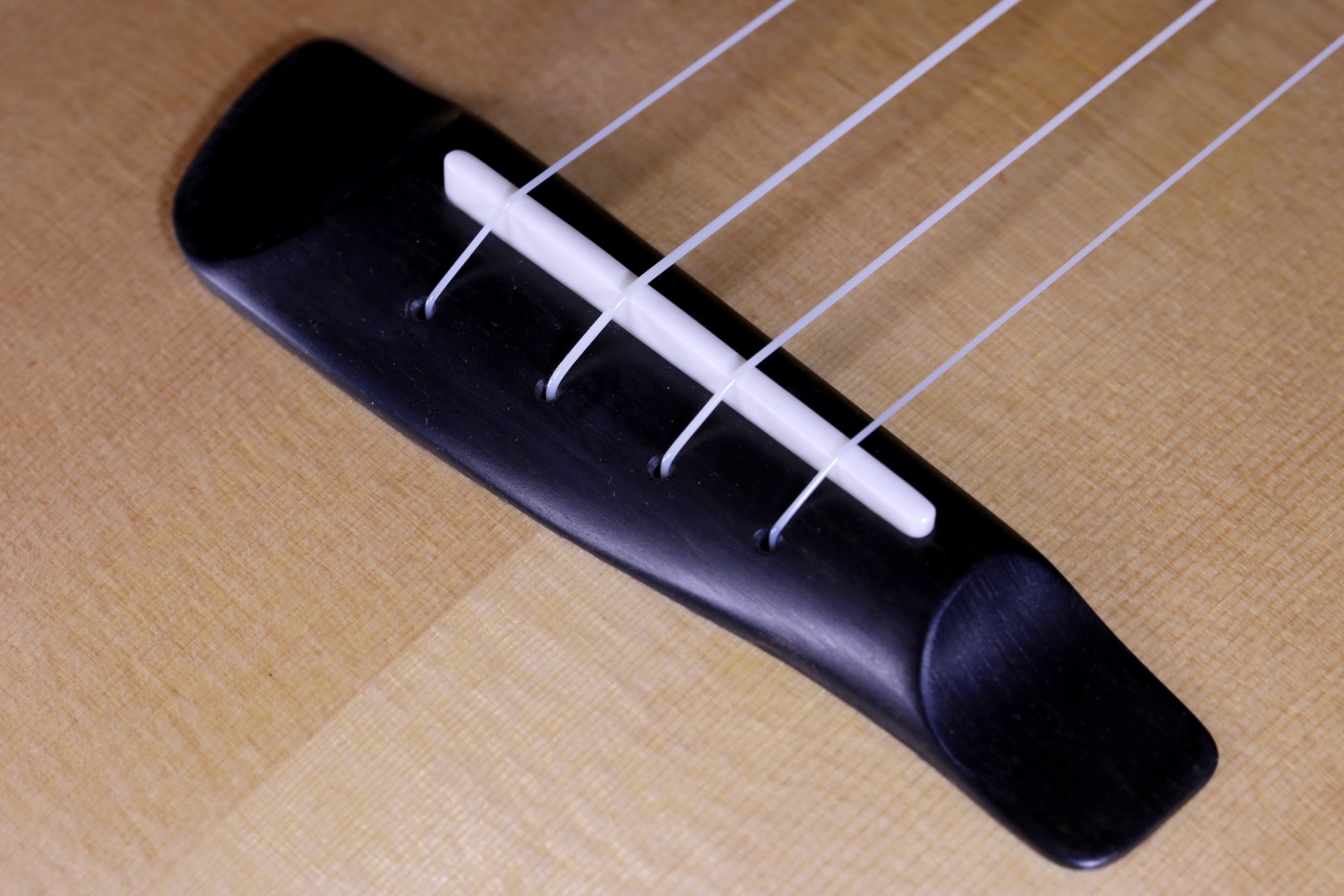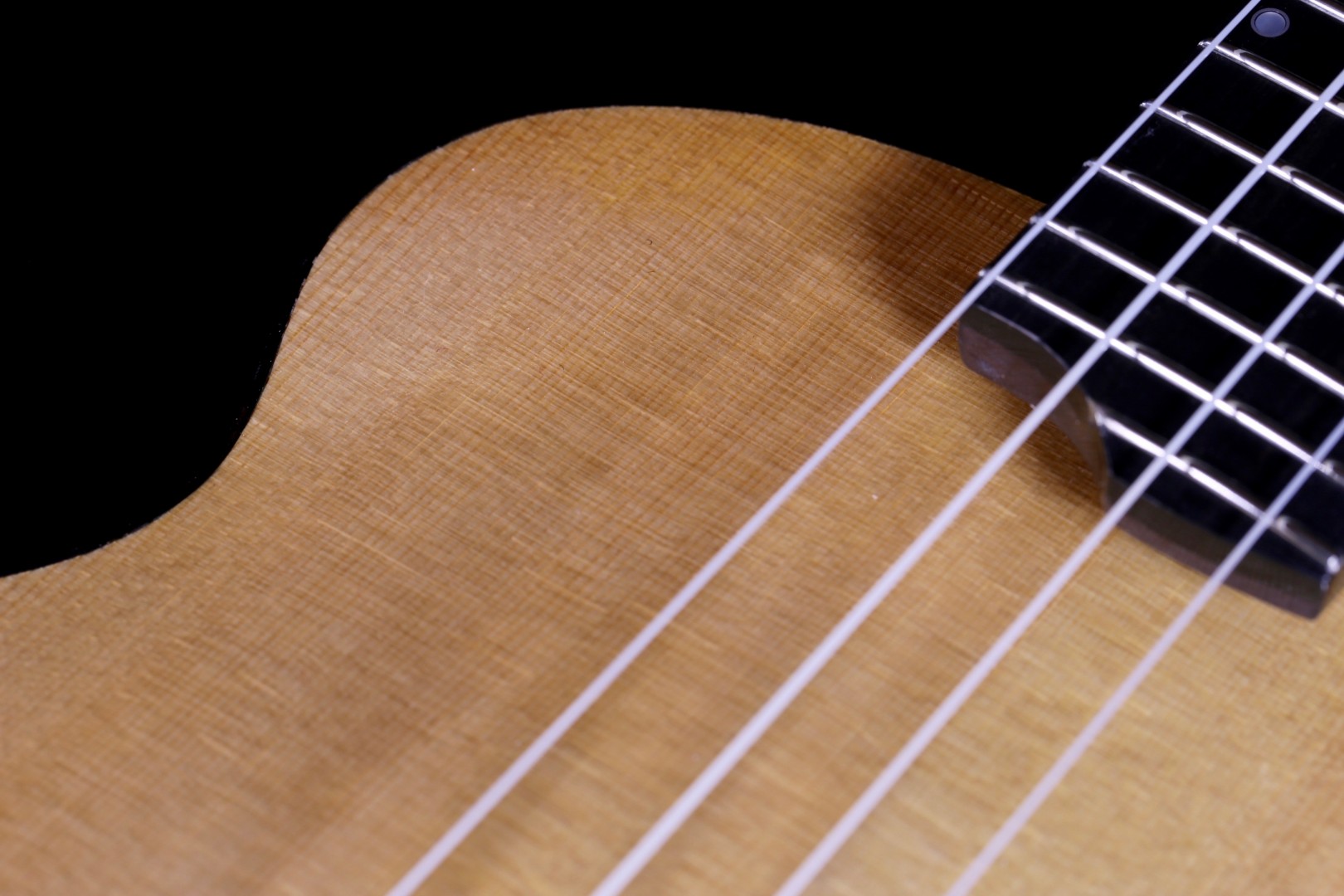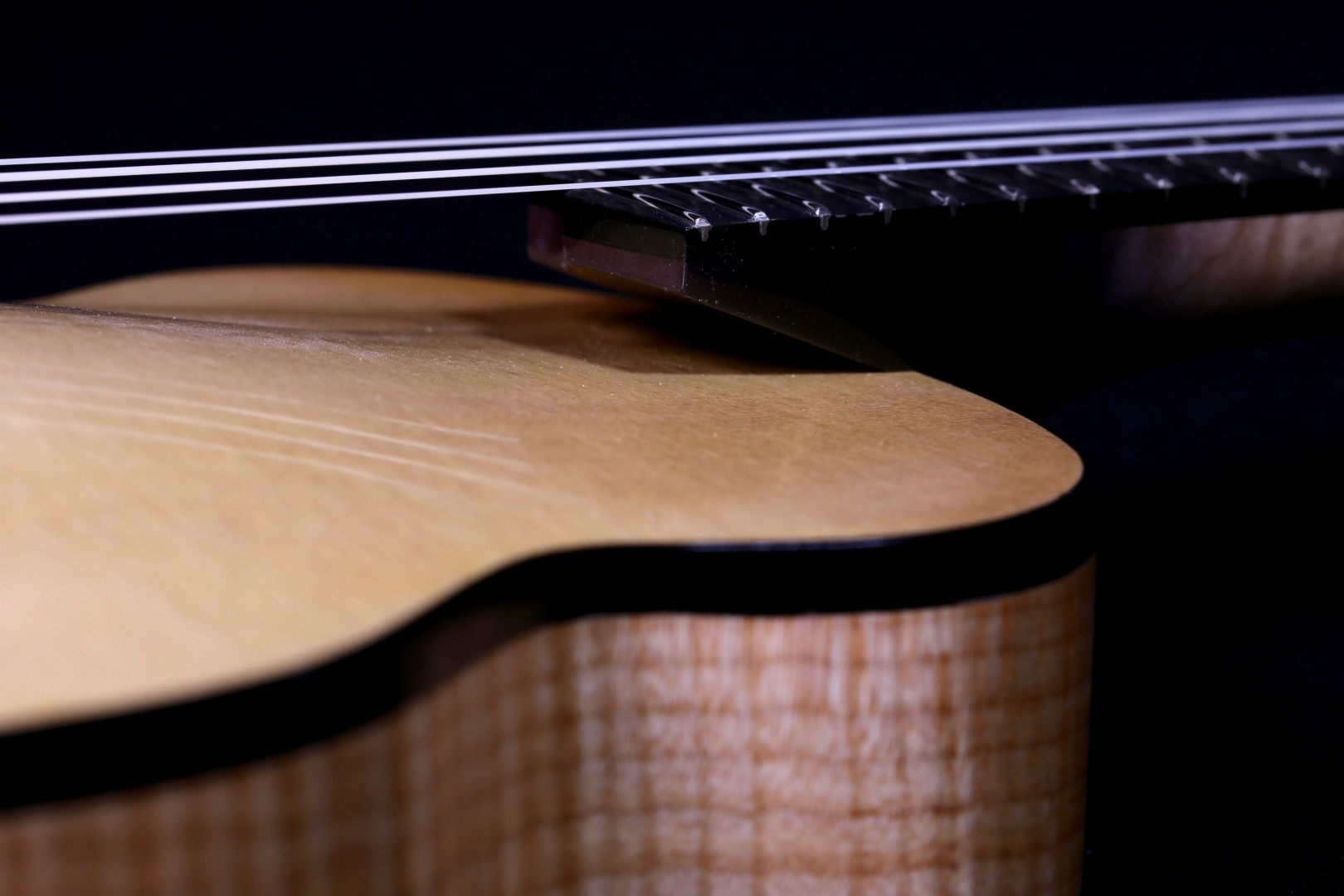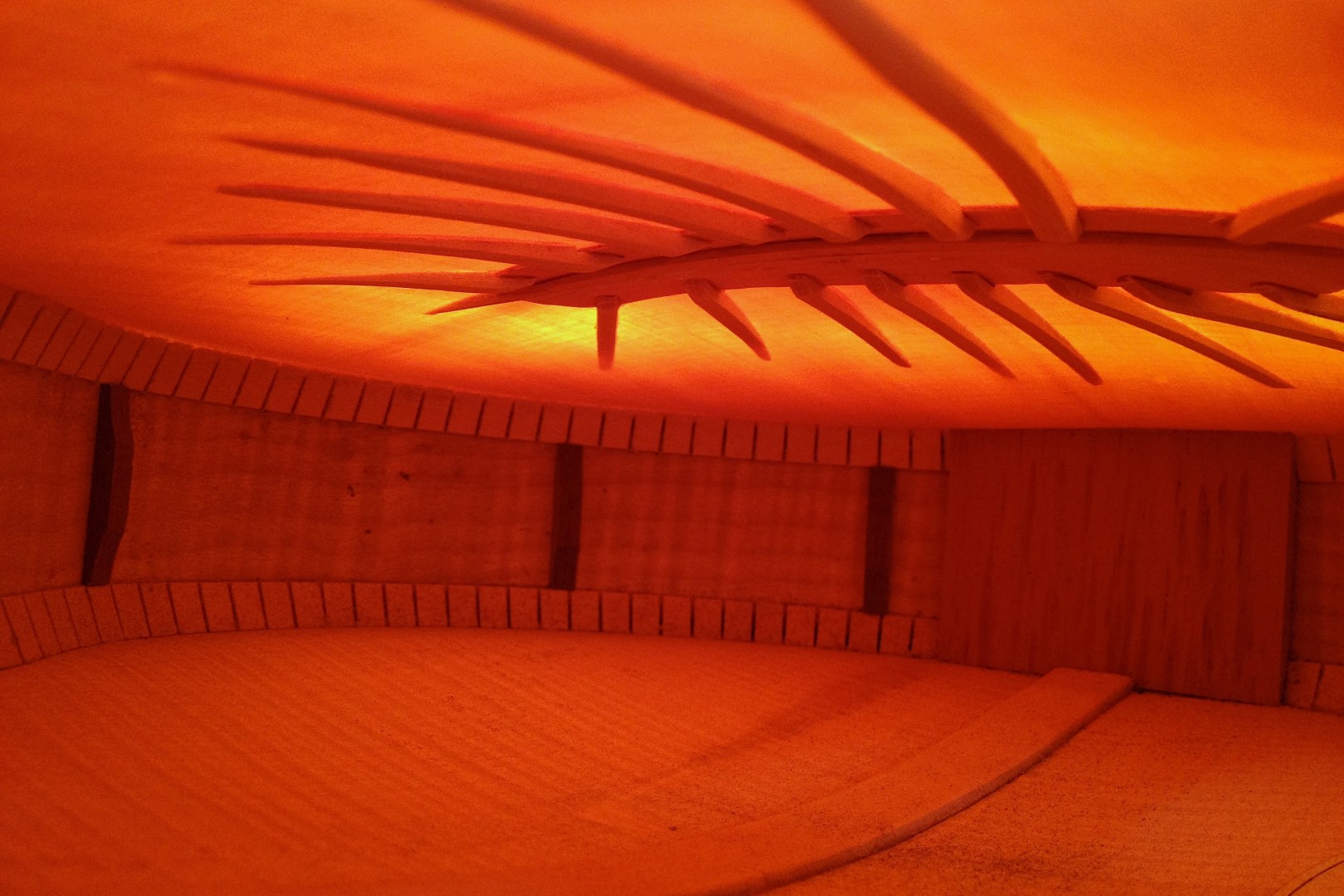Mark Roberts ‘Archtop’ Tenor Ukulele
With respect of tradition and love for modern aesthetics, Mark continues this evolution with clear artistic vision, innovative technology and meticulous attention to details using the world’s finest tone woods. While building a multitude of different instruments, he maintains a keen focus on evolving the instruments – each one built with a specific ‘tone’ in mind and never at the expense of decorative amenities.
For Mark’s sensibilities, he greatly limits decoration on his instruments. As a master at extracting the optimum tones from his instruments, Mark’s philosophy on decorative features is one that it never adds a new tone, it never improves the bloom of a note, or the sustain. It never makes the the instrument play better…and it never makes the player reach to become equal to the capability of the instrument – and for that reason there is a pure element of beauty wrapped in simple elegance that encompasses the principle and tonal richness behind each of his marvelously handcrafted instruments.
Mark’s instruments have been exhibited in the Museum of Contemporary Craft, and he has been a featured artist on Oregon Public Broadcasting’s Art Beat television series sharing his vision and work. He is a member of the Guild of American Luthiers, a contributing author to American Lutherie magazine, Guitar Maker Magazine, and his work was recently feature in Guitar Bench Magazine and Ukulele Rhythms Magazine. With an ever growing list of clients around the world, Mark is focused on evolving his designs and craftsmanship into museum quality instruments that may be past on as heirlooms for generations.
This beautiful T-16 Archtop tenor ukulele was built with a specific tone in mind. Most traditional archtop instruments are designed to be loud, but with a rapid decay of tone. They typically are built with an X-brace construction and a centrally located soundhole or F-holes. Think archtop jazz guitar. This one isn’t doesn’t sound like that according to Mark. This design utilizes two dual “tuned” side soundports, traditional Kasha tonebars, and no soundhole on the soundboard.
Mark typically utilizes Kasha or a Hybrid Kasha tonebars for his instruments tone definition. This allows for a defined tone of trebles, mids, and low tones; as well as a lot of sustain if desired; and he definitely builds for great sustain. A strum on this instrument will provide 10-15 seconds of sustain. The tops and backs of the archtop design are carved from a thick piece of wood, requiring great understanding of the balance between maximizing tone and ensuring structural integrity of the instrument. The tops and backs are not bent into the arched shape. If you hold the body of one of his instruments in your hands while having a conversation you will feel the instrument vibrating in your hands, as it responds to the air tone waves around it.
Dual “tuned” side soundports provide a face full of tone and volume for the player, but it is tone and volume balanced, and does not rob the same from being projected off the face of the instrument outward. A “tuned” side sound port/s, has the combined sound holes on the entire instrument sized to allow the body air volume to work most efficiently for volume and tone for that one instrument. This will vary from model to model, size to size (tenor, bari, etc), and with variations in soundboard stiffness and bracing/tonebars.
- Quartersawn Fiddleback Bigleaf Maple, for back, sides, and neck.
- Vertical grain European Carpathian Spruce from Romania for the soundboard.
- Gabon Ebony throughout for binding, fretboard, and headstock veneers
- Bone nut and saddle.
- Gotoh Mini 510 geared tuners
- African Blackwood bridge. More dense than ebony and transfers string energy more efficiently
- Professional Open-geared Waverly tuners for quick and precise tuning
- Mi-Si Acoustic Trio Uke Pick up System
Finish is French Polish. Hand rubbed Blonde shellac, with a mix of Sandarac, Benzoin, and Copal resins for a thin but flexible finish. This is always an upgrade due to the labor intensiveness of the application and allows for maximum ‘excitement’ of the soundboard and the body of the instrument.
All of Mark’s fretboards are radiused, including this archtop ukulele. Typically a compound radius with 10” at the nut, and 16” at the upper end of the fretboard near the 18th fret. The neck also includes a carbon fiber truss rod (.250” x .200”) for additional neck stiffness. This helps transfer more string energy from the headstock end of the neck into the body, and is an overkill prevention on a uke to ever have any neck bending from string pressure. The truss extends under, and in contact with, the bone nut.
Fretwire. Mark uses Narrow/Medium Japanese nickel silver fretwire. This is wider and slightly taller than most ukuleles. Typical ukuleles use a narrow/narrow wire, with a .053” width and a .037” crown height. Mark’s are ,080” width and .040” crown height. This is similar to Pre-War II guitars, banjos, and mandolins. The wider width comes in handy for people liking to bend notes.
Body shape. Mark created what he calls a T16’s body shape for this particular ukulele. He believes firmly in designing his instruments for a specific sound and functionality in mind and uniquely creates each body mold with these specific intentions in mind. His 16’s (C16 concert, T16 tenors, B16 baritones, and G16 guitars) all have the neck joining the body at the 16th fret. This allows two more frets up the neck than most ukes or guitars, before running into the body for more playability. The body real estate that is reduced from the upper bout with this build is added into a more rounded larger lower bout, where most tone is generated. All of his instruments have the bridge/saddle located in the center of the widest part of the lower bout, where it can dynamically produce the most tone and volume.
Superb tone and playability manifest in each instrument’s artful beauty. A sound born of superior craftsmanship, shaping a deep resonance from flawless intonation, allowing each note to bloom. His design and building principles define his work, and challenge perceptions of what a modern custom ukulele can be. Composed, confident, artistic, and unique, Mark’s instruments set new standards for this next age of contemporary ukuleles.
Price: SOLD

